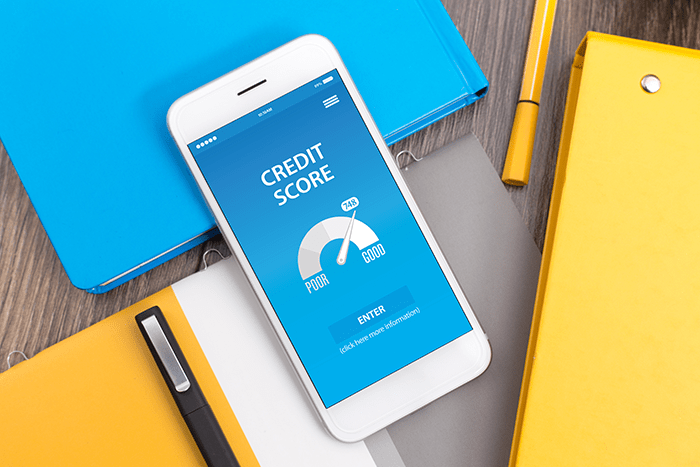Credit cards, loans, personal finance – debt plays a part in everyday life. However, if it becomes unmanageable, you may need to consider a debt management plan to fix your finances and pay back what you owe.

If you are struggling to pay back your debts and manage your outgoings, we’ve rounded up everything you need to know about Debt Management Plans to help you get back on track.
What you’ll learn:
- What is a Debt Management Plan?
- How does a Debt Management Plan work?
- Does a Debt Management Plan affect your credit rating?
- Signs you could be borrowing more than you can afford
- What are the different types of debt?
- What are non-priority debts?
- How to manage your debts
- Tips to take control
- Managing debts with a consolidation loan
- FAQs
What is a Debt Management Plan?
A DMP (Debt Management Plan) is an informal agreement between you and your creditors. This agreement allows you to pay back what you owe over an agreed period of time – typially on a monthly basis.
A DMP is managed by a DMP provider, who acts as a go-between for you and your creditor. This means you should no longer have to deal with being chased for payment, which can really help with the mental load of handling your finances.
DMPs are not legally binding and this means if your circumstances change you can pay more or end the agreement sooner. What you pay is tailored to what you can afford.
How does a Debt Management Plan work?
Before you consider a DMP, it’s worth taking a moment to consider how you want to handle the repayment of your debt. For example, if you’d like to settle your debts quickly then there may be other alternatives. But, if you’d like your debt to be managed by another party, and to pay it back in regular, manageable instalments, a DMP could suit you.
Here are some tips that can help with debt management and make the process a bit easier:
- Work out your budget. While a DMP Provider may offer to help you budget, it can be sensible to do it yourself first.
- Consider other charges. There are often fees associated with these plans, and providers may charge you. While not all do, it’s worth asking and considering how this may affect your repayments.
- Priority debts. Ensuring you can cover your priority debts first is more important than your non-priority. Work this into your budget.
Now that you know your budget and have a better idea of what to expect, you can search for a suitable plan.
How to set up a Debt Management Plan
So, you’ve decided you want to go ahead with a DMP – but you’re unsure where to find a provider. There are a few ways to search for a DMP Provider:
- Look online for debt management advice. The website moneyhelper.org.uk provides a list of organisations who can help
- Ask friends or family for a recommendation, especially if they have experience or work in the industry.
- Seek debt advice counselling, or if you’re already involved in counselling, request help there.
- Get help from your local Citizens Advice Bureau.
Just because a DMP Provider looks to fit the bill, it doesn’t always mean they’re ideal for you and your situation.
Do your research, check reviews, and ensure you understand the ins-and-outs of what you’re signing up for. Comparing solutions between providers can help you gauge the deal you’re getting.
Does a Debt Management Plan affect your credit rating?

Any details of defaults, partial payments or court action are recorded on your credit report for six years, after which they are removed. Even if the debt hasn’t been fully repaid, if there’s no new instances, it should be removed from your credit file.
It is sometimes the case that a Debt Management flag is added to your credit report – some creditors ask to add a note confirming that you’re making payments via DMP. This means other creditors can see that you’ve required a DMP and it may reduce your chances of being able to borrow in the future. Once your DMP is paid off, then you can start over and begin building credit again.
Signs you could be borrowing more than you can afford
According to The Money Charity the average UK household owes £63,528, which is £33,328 per adult, including mortgages. That’s 108.7% of average earnings. It’s no surprise then that many of us may find ourselves in a situation where we have borrowed more than we can afford.
Here are five signs you could be struggling with debt:
- Your outgoings are higher than your income. If you are spending more than you earn to cover debt payments and bills then this suggests you are borrowing more than you can actually afford.
- You are borrowing money to cover existing debts. If you are borrowing more money to cover debt payments, this will not only increase your debt but suggests your borrowing has become unmanageable.
- You are struggling to keep up with repayments. If you are regularly late making payments or missing them completely this can lead to trouble later. Your credit score will be impacted and you could even have your home or what you’ve borrowed against repossessed.
- You are struggling to keep track of what you owe. If you don’t have a clear idea of what you owe or who you’ve borrowed from this could be a sign that you’re borrowing and spending more than you can afford.
- You can’t save money. If you have no disposable income after debt and bill payments, you are likely borrowing more than you can afford. If you’re unable to save money, this can cause issues if you have an emergency expense that arises – resulting in more borrowing and further debt.
What are the different types of debt?
A debt is when you borrow money from elsewhere to pay for something you want or need. There are two types of debt: secured debt (borrowing against your assets) and unsecured (no collateral but higher interest).
| Type of debt | What is it? | What is it used for? |
|---|---|---|
| Credit cards | Credit cards are the most common form of unsecured debt. A credit card allows you to borrow money up to an agreed amount and then pay it back over time. Some credit cards offer 0% interest for a limited period, which make them appealing to many people. | Shopping, to build up credit. |
| Mortgage | This is a secured loan that allows you to purchase a property. You pay in set instalments each month and failing to pay could result in you losing your home. | To purchase domestic or commercial property. |
| Car finance | Many people opt for car finance when they want a new car or a newer model. Payments are made monthly and at the end of the borrowing term you can either hand the car back or buy it outright. | To buy a new or second car. |
| Personal loan | This is another type of unsecured debt that can be taken out over an agreed period of time via a loan provider or your bank. | To consolidate debt, upgrade your home with renovations or pay for milestone life events. |
| Overdraft | This is an unsecured type of borrowing that allows you to spend past your bank balance. At the end of the month you pay back what you have borrowed. | To cover daily spending, pay bills. |
| Store cards | These are similar to credit cards but can only be used with specific retailers. | To buy clothes and everyday items with credit. |
What are non-priority debts?
Non-priority debts are typically forms of borrowing that are unsecured. The repercussions of not making payments aren’t quite as serious as priority debts but you should still make payments on time and in full to avoid damaging your credit score.
Examples of non-priority debts
- Credit cards and store cards
- Payday loans
- Unsecured loans and personal loans
- Overdrafts
- Bank or building society loans
Examples of priority debts
- Mortgages
- Council tax arrears
- Energy bills
- Phone and broadband
- TV licence payments
- Unpaid income tax
- Unpaid child maintenance
- Court fines
It’s important that you ensure your priority debts are paid first and then non-priority debts.
How to manage your debts
No matter your situation, it’s never too late to take action to manage your debts – and remember, you’re not alone. Here’s how to take control of your debts and get your finances back on track.
Get a clear picture of your finances

The easiest way to get a handle on your finances is to write down all your outgoings and earnings. This way, you can compare both to see if you are paying more out than you are bringing in.
To do this:
- Make a list of all your debts. Include the total amount due, payment dates and any other important features, like late fees or interest rates.
- Calculate your income. Make a note of your salary and any other earnings, such as child benefit or tax credits.
- Add up your regular outgoings. This could include your mortgage or rent, utility bills and subscription services.
- Include any additional finances. Saving up for a big life event? Due a sum of money in compensation? All these things could affect your overall finances.
Balance your budget
Now you understand where your money is going, you can begin to look at ways to make your funds stretch further. For example:
- Subscription services. TV and music subscriptions can add up if you’re big on variety. Ask yourself – do I use all these services and could I cancel one or more of them. Some streaming platforms now offer Family accounts – it’s always wise to split the TV bill with roommates or a partner.Likewise with music, gym or food services opt for referral schemes where you could save precious pennies.
- Food. Save money on food shopping with some simple tips and tricks. Set up alerts online for deals and vouchers on your favourite brands, and plan your meals ahead of the supermarket trip so you’re less tempted to impulse-buy.
- Luxuries. Are there any little extras you could cut back on or give up altogether? Swap out Starbucks coffee for home brews, and avoid temptation by unsubscribing to email offers you might have accidentally signed up for.
Get help with your situation
There are several organisations that aim to help people with their money. This includes debt charity Step Change, which offers free advice and resources for getting on track with your finances.
You can also reach out directly to your creditors to explain your situation. Most of the time, they will appreciate your honesty and work with you on a solution, such as giving you an extension on your repayment date.
Tips to help take control
Managing debt can often seem like a never-ending battle. Here are a few tips for staying in control of your repayments.
Create a payment calendar
Knowing what is due and when can help you organise your finances, to ensure you always have enough money in your account to cover the bill.
To do this, grab a calendar and add in the amounts due at different points of the month. Then, add when you get paid and any other earnings that crop up throughout the month.
From this, you can see how far your income stretches between payments.
Prioritise your debts
It’s a good idea to list your debts in priority order. This way, if you do have some spare cash at the end of the month, you know exactly which debt to pay towards first.
Again, ensure your mortgage, council tax and energy bills are covered first, then focus on other debts. Usually, the debt with the highest interest rate should be top of the list (often a credit card bill). But you can also prioritise by amount due to tick off the smaller debts first, and free up some funds.
Meet the minimum payment
If you’re struggling to pay off debts, try your best to still meet the minimum payment. Even missing one payment can cause added late fees, which could land you further in debt and could affect your credit rating.
If you’re struggling to even meet the minimum payment, try not to take out any more debts, such as another credit card, to cover this. Instead, speak to the creditor directly to ask for an extension.
Managing debts with a consolidation loan
A debt consolidation loan could help you pay off all your existing loans and combine your monthly payments into one single repayment.
How debt consolidation works
The idea is that you use a debt consolidation loan to pay off your existing debts, meaning you only owe money to the consolidation loan provider. This would mean you no longer have to make multiple payments each month, which could help you save on things such as interest and late fees, as well as carving out a route to becoming debt-free.
Key considerations to make before taking on a debt consolidation loan include:
- Understanding your finances. Everyone’s situation is different, and a debt consolidation loan may not be a one-size-fits-all solution. It’s important to understand your specific situation to know whether debt consolidation will help.
- Searching for the right product. Speak to a loan provider to find out what you can borrow, whether it’ll be enough to cover your debts (including interest), and whether you can afford the monthly repayments.
- Being prepared. Make sure you have all the information you need to hand when you apply, including a list of lenders you owe money to and the amounts due.
- Staying in control. Once you’ve paid off your debts, it’s crucial that you stay on top of your finances to avoid a similar situation in the future.
Debt management or debt consolidation?
Although they sound similar, debt management and consolidation are two fundamentally different approaches when it comes to clearing your debts.
Debt management involves speaking to the businesses you owe money to and agreeing affordable payments, however this will usually affect your credit rating whereas debt consolidation involves taking out a new loan to pay off your existing debts which may mean you pay more interest if the loan is taken over a longer term but this won’t affect your credit rating.
How to apply for a debt consolidation loan
To apply for a debt consolidation loan with Norton Finance, begin by telling us how much you’d like to borrow and over what period.
Our loan calculator can help you get started on creating your debt consolidation plan, showing you the monthly repayments you could expect to pay if you’re successful in your application.
FAQs
Can I improve my credit score on a debt management plan?
If your plan includes repaying your creditor at rates lower than originally agreed, then your credit score will be negatively impacted. While not paying back is worse, a DMP may negatively impact on your credit score.
A DMP can look better on your credit file than having unpaid debts, affecting your score to a lesser degree, but not improving it in comparison to having paid off your debt in the first place.
What are the negatives of a debt management plan?
There are a few things to consider before starting a debt management plan:
Creditors are not required to enter into a debt management plan and may request immediate repayment. While rare, it’s a possibility.
- Your debts must be repaid in full.
- It does not cover priority debts.
- There can be charges when using a debt management plan provider.
- It can affect your credit score.
Can I pay my DMP off early?
Yes, most debt management plans are flexible and early payments should be an option with most providers. Often, you can do this by paying a lump sum or increasing your monthly repayments.
The sooner your plan ends, the sooner you can work on restoring your credit score.
Explore our other debt management guidance or get a quote for a debt consolidation loan to simplify your financial situation.
Share:

